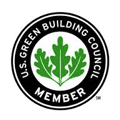A proposed change to the residential building code (International Residential Code) would eliminate the need for halogenated flame retardants in many applications
Photo Credit: Jordan Dentz
As readers of this blog know, I’ve come down fairly hard on certain types of foam insulation over the years. The downsides include theblowing agents used in extruded polystyrene (XPS) and most closed-cell spray polyurethane foam and the flame retardants that are added to all foam-plastic insulation to impart some level of fire resistance.
Now there’s an effort afoot to change building codes in a way that would allow manufacturers to remove the hazardous flame retardants. This is the subject of a just-published feature article inEnvironmental Building News (log-in required).
This is a significant energy issue, because layers of foam insulation provide the easiest way to achieve the level of energy performance needed to approach net-zero-energy performance. If we’re going to add a lot of foam insulation to our homes, we want that to be safe for the occupants and the environment.
Flame retardants used in foam insulation
We don’t want insulation materials to catch fire, so it is logical to add flame retardant (FR) chemicals to these materials if it will prevent them from catching fire. That’s the reason HBCD (hexabromocyclododecane) is added by all polystyrene insulation and TCPP (Tris (1-chloro-2-propyl) phosphate) is added to most polyisocyanurate and spray polyurethane foam insulation. These are both halogenated flame retardants—the first using bromine, the second chlorine.
The problem with these halogenated FRs is that they have significant health and environmental risks. The HBCD that is used in all polystyrene (both extruded and expanded) is being targeted for international phase-out by the Stockholm Convention on Persistent Organic Pollutants. It is highly persistent in the environment and bioaccumulative in the food chain; it is believed to cause reproductive, developmental, and neurological impacts. Less is known about the TCPP used in spray polyurethane foam and polyisocyanurate, but there is significant concern in the health and environmental community.
Building codes require that foam-plastic insulation meet a very specific flammability standard. But building codes also require—for most applications—that foam insulation has to be separated from living space by thermal barriers, such as gypsum drywall.
The efficacy of flame retardants compared with thermal barriers
Combustion studies that were done in the 1970s showed that if the insulation is not protected with a thermal barrier, there is no correlation between the presence of FR and the extent of the resultant fire. Thus, the inclusion of a FR does not seem to appreciably increase the fire resistance of foam insulation, according to a peer-reviewed technical paper recently published in the journalBuilding Research and Information.
However, thermal barriers like half-inch drywall work extremely well at containing fires. The 15-minute protection provided by half-inch drywall gives occupants time to escape a fire. In other words, of the two measures used to impart fire safety to a building assembly (FRs in foam insulation and thermal barriers) almost all of the fire safety benefit is provided by the thermal barrier.
Changing building codes to allow elimination of flame retardants
Because the vast majority of the fire safety in a building enclosure is provided by the thermal barrier, a group of environmentally aware architects, chemists, and code experts is seeking to change building codes to allow non-FR foam to be used in applications where adequate protection is provided by a thermal barrier. (Disclosure, I have been involved in this initiative.) The code change would allow the FR-free foam to be used below-grade, where the insulation is sandwiched between concrete and earth (hardly a fire risk), and where the foam is separated from the living space by a 15-minute thermal barrier, such as half-inch drywall.
For the former application (below-grade insulation), I believe it’s a no-brainer. Over half of XPS is installed below-grade, so I think there could be a very viable product free of FRs for this application. The change to building codes wouldn’t mandate the elimination of FRs, but it would give manufacturers the option to do so if they chose to. Eliminating the FR for above-grade applications where there is a 15-minute thermal barrier isn’t a slam-dunk, but I believe the case being made is strong.
Changing building codes, however, is a long, challenging process; I don’t know what chances the initiative has. In my article research, manufacturers expressed reservations that they don’t want to have to produce, distribute, and market two different lines of material, and they point out that they also have to be concerned with fire safety of material being stored and during construction (before drywall is installed).
On the other hand, though, foam insulation manufacturers spend a lot to incorporate FRs into their products. The insulation contains a not-insignificant amount of these chemicals: 12.5% TCPP in open-cell spray polyurethane, 4% TCPP is closed-cell spray polyurethane, and 2.5% HBCD in extruded polystyrene. A lot of the strategies for “greening” building products increase the manufacturing costs, while removing expensive FRs should reduce costs. So there is some interest by the industry in this change.
As described in our Environmental Building News article this month, “Getting Flame Retardants Out of Foam Insulation,” the code-change initiative is being targeted, initially, at the International Residential Code. If successful, an effort to change the International Building Code (for commercial buildings) will follow.











